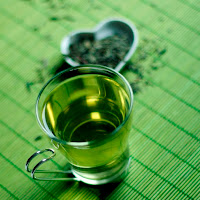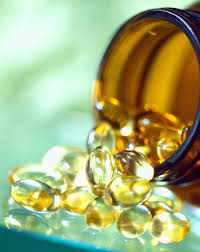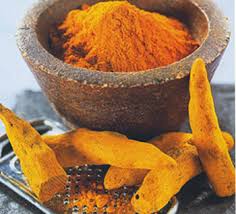
Green Tea
Green tea has long been praised for its many antioxidant properties. In the last decade we have seen green tea become a major focus of research within the scientific and medical communities in order to determine the extent of its alleged health benefits. Advocates of green tea usage suggest that the properties of the tea lower the risk factors for contracting heart disease, cancer, weight gain, and other maladies. Traditionally, it has been associated with Asian and Middle Eastern countries, but in the last part of the 20th century and into the 21st we have seen green tea consumption increasing steadily in the West.
There are dozens of green teas to choose from; Chinese green tea, Japanese green tea, or green teas from the Middle East and other regions of the world. As a general rule of thumb it is brewed with two grams of tea to 100 milliliters of water, but the actual brewing time and temperature will vary depending upon the type of tea, as well as personal preference. Normal green tea is caffeinated, and in some cases may contain more caffeine than coffee. The amount in any single serving can vary significantly depending upon the method of brewing and type of tea used.
Tea has been consumed in China for more than 4,000 years, and it is largely considered to be the originating country for knowledge about, and consumption of, the beverage. However, many Asian cultures such as Japan, Vietnam, Korea, India and Thailand have long used green tea as a method of traditional medicine for regulating body temperature, controlling blood sugar, promoting digestion, and controlling bleeding. A book written in 1191 by the Zen priest Eisai describes the positive effects of green tea on the five vital organs, especially the heart. He discusses its uses for preventing fatigue, improving urinary and brain functions, its stimulant properties, ability to quench thirst, and for easing the effects of alcohol.
The Health Benefits
Green tea contains polyphenols, which have long been thought to improve health. Clinical studies show that green tea can reduce the risk of cardiovascular disease, cancer and dental cavities, improve bone density, cognitive function, and assist in ridding the body of kidney stones. Many of the clinical studies have been performed informally, with the results being mixed and inconsistent, depending upon the groups who performed the studies. Green tea is known to contain carotenoids, tocopherols, ascorbic acid, and many different minerals, making it a powerful antioxidant.
A study at Birmingham University showed that the rates of average fat oxidation were 17% higher after ingestion of green tea versus a placebo, implying that green tea cannot only help burn fat during exercise, but can also improve sensitivity and glucose tolerance in healthy young men. Another study at Technion showed that mice infected with Parkinson's and Alzheimer's, when fed the main antioxidant extract of green tea called EGCG, exhibited improved brain cell recovery. The findings were published in the Fourth International Scientific Symposium on Tea and Human Health in 2007.
Green tea has often been credited with a wide variety of additional health benefits, not all of which have been validated by scientific research. Therefore these are considered anecdotal claims only, and hence fall within the realm of alternative medicine. For example, certain individuals claim that green tea can help treat multiple sclerosis, as well as prevent the degradation of cell membranes and reduce the effects of LDL cholesterol. Dr. Nicholas Perricone appeared on ‘The Oprah Winfrey Show’ and claimed that drinking green tea over the course of six weeks rather than coffee may enable an individual to lose up to 10 pounds due to the fat burning qualities of the herb. Important to this discussion is the alleged effects it can have on the prevention and treatment of cancer.
Can Green Tea Really Help Treat Prostate Cancer?
One of the only studies performed on the subject, published in the Journal of the American Association for Cancer Research, showed that men with prostate cancer who consumed the active compound in green tea showed a significant reduction in the serum markers predictive of progression of the pre-existing prostate cancer. The study was an open-label, single-arm, phase II clinical trial and included 26 men between the ages of 41 and 72, all of whom had been diagnosed with prostate cancer and scheduled for radical prostatectomy. They consumed four capsules daily containing the Polyphenon E until the day before the surgery, which is the equivalent of roughly 12 cups of normally brewed, concentrated green tea. The duration of the study ranged from 12 to 73 days, with a median time of 34.5 days according to Dr. James A. Cardelli, professor and Director of Translational Research at the Feist-Weiller Cancer Center, LSU Health Sciences Center-Shreveport.
The eventual findings showed that there was a significant reduction in serum levels, with some patients showing reductions greater than 30%. According to Dr. Cardelli the compound “may have the potential to lower the incidence and slow the progression of prostate cancer…and there is reasonably good evidence that many cancers are preventable, and our studies using plant derived substances support the idea that plant compounds found in a healthy diet can play a role in preventing cancer.”
However, it should be noted that these results were not conclusive. The researchers themselves said that these findings support “a potential role for Polyphenon E in the treatment or prevention of prostate cancer”, but as Dr. William G. Nelson of the Johns Hopkins Kimmel Cancer Center noted, “this trial was not a randomized trial, which would have been needed to be more sure that the observed changes were truly attributable to the green tea components and not to some other lifestyle change that the men undertook in preparation for surgery. However, this trial is provocative enough to consider a more substantial randomized trial.” As a result, the researchers from the first study are currently working in collaboration with Columbia University on further studies.
For more information, visit UltraFitnessDynamics









